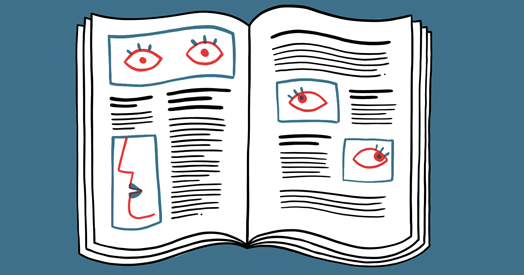Many women, men with autism harm themselves
Adults with autism, particularly women, deliberately hurt themselves much more often than other adults do.
Adults with autism deliberately hurt themselves much more often than other adults do, an online survey suggests1. This behavior, which may provide a physical outlet for emotional pain, crops up twice as often in women with autism as in men with the condition.
The findings support anecdotal reports that teens and young adults with autism are unusually likely to engage in self-harm — behaviors that include cutting, nail-biting and pinching. Teens with autism are also 28 times more likely than their peers to attempt suicide.
The new study focuses on non-suicidal self-harm in 42 adults with autism and 42 young adults who do not have autism, but have a history of self-harm.
Despite the study’s small size, its results serve as a clarion call for studies of self-injury in people with autism, says senior researcher Susan White, director of the Psychosocial Interventions Laboratory at Virginia Tech in Blacksburg, Virginia. Such studies could provide detailed information about the motivations and types of self-harm in people with autism.
The participants, ranging from 18 to 56 years old, answered an online questionnaire called the Non-Suicidal Self-Injury Assessment Tool, which assesses self-care, self-harm and emotion regulation. They also completed the Severity Measure for Depression.
The two-part survey was designed to pick up on carefully calculated actions — such as cutting into the skin or drinking hazardous chemicals — that reflect emotional angst, rather than repetitive, rhythmic behaviors such as head-banging or biting that often accompany intellectual impairment or sensory difficulties, White says. One question, for example, asks whether self-injury is a calming remedy for anxiety, an outlet for uncomfortable feelings or a way to call for help without having to muster the courage to speak up.
The study found that half of the 42 adults with autism engage in deliberate self-harm. Studies estimate that 5 to 17 percent of adults in the general population show these behaviors2.
The finding may reflect the elevated rates of depression and emotional issues in adults with autism, White says. “It makes sense that something that goes along with depression and emotional dysregulation, like self-injury, might also be more common,” she says.
Emotional pain:
Women with autism are more likely than men with the condition to harm themselves, the survey found. Of the 18 women with autism in the study, 13 reported that they engage in self-harm, compared with 8 of the 24 men with the condition.
The findings also suggest that self-harm arises from emotional pain, rather than being a manifestation of the repetitive behaviors associated with autism, says White. People with autism and those in the control group both indicated that they have difficulties expressing anger and other strong emotions in a healthy way.
“It seems that non-suicidal self-injury gives voice to their pain,” White says.
The study’s online format limits the researchers’ ability to follow up on hints about the causes of self-harm, says Connie Kasari, professor of psychology at the Center for Autism Research and Treatment at the University of California, Los Angeles, who was not involved in the study.
But the issue of non-suicidal self-injury deserves “more exploration, probably in assessed participants, rather than an online survey, to better characterize participants,” Kasari says.
White’s group plans to conduct larger studies and interview people with autism to find the causes.
Meanwhile, White says, clinicians should watch for signs of self-harm in teens and adults with autism, as well as probing family members to detect these behaviors. “Non-suicidal self-injury isn’t a thing you treat — it’s a thing that calls for help,” White says.
References:
Recommended reading

New organoid atlas unveils four neurodevelopmental signatures

Glutamate receptors, mRNA transcripts and SYNGAP1; and more

Among brain changes studied in autism, spotlight shifts to subcortex
Explore more from The Transmitter

Not playing around: Why neuroscience needs toy models
